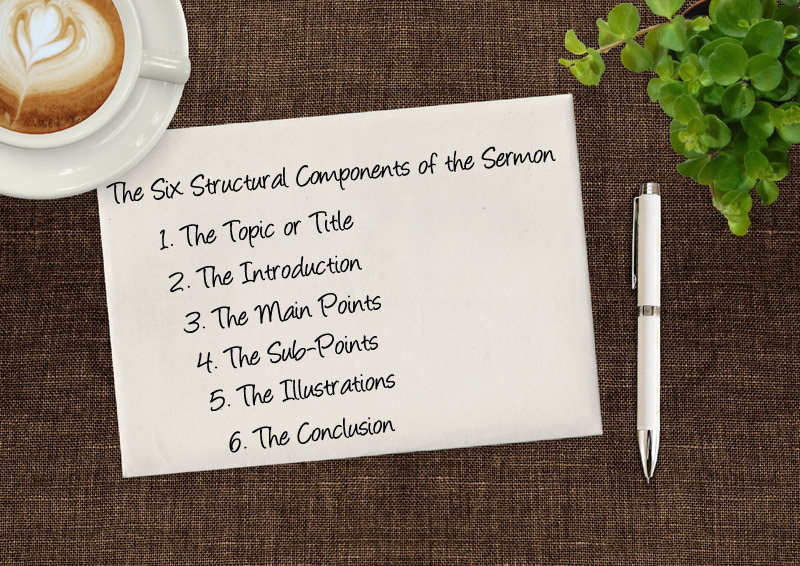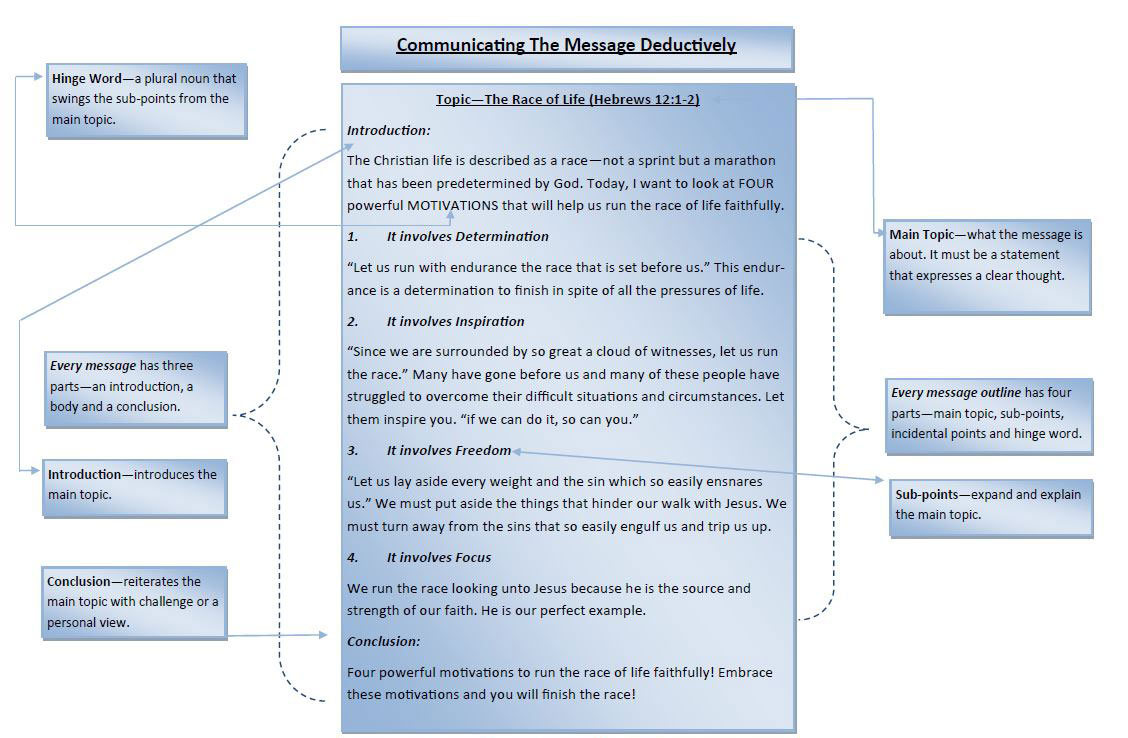The Six Structural Components of the Sermon: Great sermons are made up of great parts. If the parts or structures are great throughout, then you will have a great sermon to share with your congregation.

So what are the six structural components of the sermon that makes the message great?
1. The First Structural Component is the Topic or Title
If you want to get people’s attention, a great topic or title for your message will help tremendously. Today I am going to talk about “temptation.” Boring! Instead, I want to talk to you today about “how to resist deadly temptation when it seems so inviting.” This title is brief, attractive, thought provoking, scriptural and interesting.
It takes time and effort to formulate a great title for your message. Your congregation will love you for it!
2. The Second Structural Component is the Introduction
The introduction must demand attention. It needs to uncover a need so that they will listen and it needs to introduce the topic of your message. The introduction needs to be relevant with a personal touch.
There are different ways you can get your audience’s attention. You can upset the equilibrium – He Has It All And Yet He Is Poor! You could use a rhetorical question – If God has no form, how can He see, hear, smell, touch and speak?
You can always count on a good story to get people’s attention.
He opens his eyes but all he could see was darkness, pitch-black darkness. His heart begins to race faster and faster as he cries out for help, but it seems that no one hears him.
As he lies there, he realizes that this may be the end of the road. Stewart Diver was trapped under the rubble at Trebo. There was no way he could escape or rescue himself. There was no way to pull himself out. He could barely move under all that rubble. He was trapped. He was helpless.
But a rescue worker hears a noise, a faint noise. He calls out for silence. Then he shouts out in a loud voice, “Is anyone there? Is anyone there?” Stewart hears him and calls back, “I can hear you. I can hear you.”
The only reason Stewart Diver was rescued that day was because he had a rescuer. He couldn’t rescue himself. He had to simply trust his rescuers to save him.
We too have a rescuer and a deliverer. Today I want to talk to you about “The One Who is Able to Pull Us Out of The Darkness and Rubble of Sin.”
3. The Third Structural Component is the Main Points
The main points expand and explain the subject or topic of your sermon. They should be complete sentences. They should be mutually exclusive. They should by sequential with a natural progression and they should be parallel in form. See image below!

4. The Fourth Structural Component is the Sub-Points
The sub-points should follow the same features of the main points – complete sentences, mutually exclusive, sequential and parallel in form.
5. The Fifth Structural Component is the Illustration
Someone said, “Many a sermon has been saved by an effective illustration.” Hopefully your sermon is not one of them! Illustrations are very powerful in re-enforcing the truth that you want to teach from the Bible. You must remember that illustrations are not the sermon. It is a structural component of the sermon that helps you re-enforce your preaching points or sub-points.
6. The Sixth Structural Component is the Conclusion
The conclusion is a very important component of the sermon and it requires thought and wisdom in order to bring your message to a burning focus that will appeal to the individual for a response.
By learning and developing the six structural components of the sermon, you will be better prepared to create and deliver powerful sermons to your congregation.
Resource Material For The Six Structural Components of the Sermon
Biblical Preaching by Haddon Robinson
Christ-Centered Preaching: Redeeming the Expository Sermon by Bryan Chapell
How To Preach Without Notes by Charles Koller
How To Prepare Bible Messages by James Braga